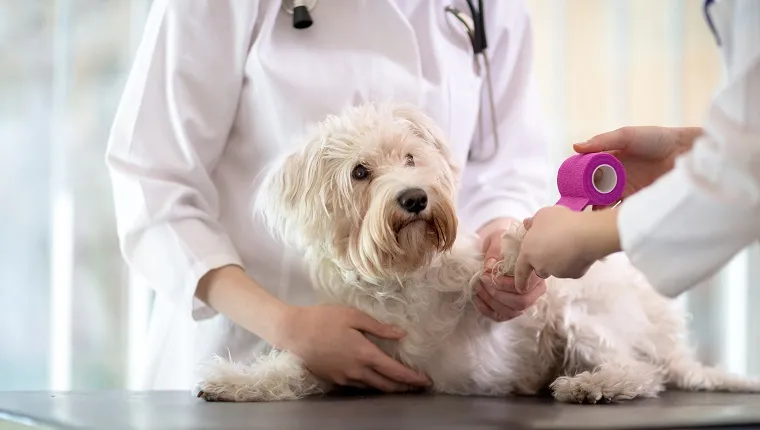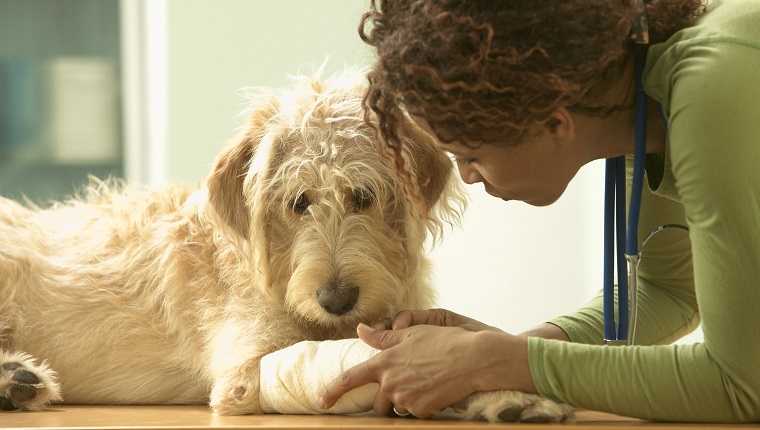
Actinomycosis in dogs is an infectious bacterial disease that is often contracted when bacteria enters the dog’s body via an open wound. The disease can spread at a slow pace and ultimately end up producing a range of different outcomes, including meningitis.
Large dogs who spend a lot of time outdoors are generally the most likely to develop this condition.
If you see signs that your dog might be suffering from a bacterial disease, then you must consult your veterinarian for a proper diagnosis and course of treatment. Here’s what you should know about the symptoms, causes, and treatments of actinomycosis in dogs.
Symptoms Of Actinomycosis In Dogs
Actinomycosis in dogs can result in a very wide range of symptoms. Some of the most common symptoms include:
- Fever
- Visible infections around the face and neck
- Inflamed bones
- Issues with walking steadily
- Swollen skin
Causes Of Actinomycosis In Dogs

Actinomycosis in dogs primarily arises via what is known as “opportunistic infection.” This means that the bacteria makes its way into the dog’s body via open wounds and cuts.
In some cases, dogs with compromised immune systems or those who suffer from periodontal diseases might also have a higher risk of contracting the disease.
Treatments For Actinomycosis In Dogs
If you suspect that your dog has actinomycosis, then your veterinarian will want to carry out a full physical examination. They’ll also order blood and urine tests, along with examining your dog’s electrolytes. In some cases, X-rays can additionally help confirm a diagnosis.
Treatment often revolves around draining any abscesses that the disease has produced. Taking measures to stop fluid building up around the affected areas is also a key part of treating the disease.
In severe cases, dogs may need a surgical process to remove parts of bone.
In most cases, vets will prescribe antibiotics as part of the treatment process. As ever, if your vet prescribes medication for your dog, then you must stick to the recommended frequency and dosage instructions, along with completing the full course of medicine.
Has your dog ever developed actinomycosis? What kind of treatment did they get from your vet? Tell us all about it in the comments below.









